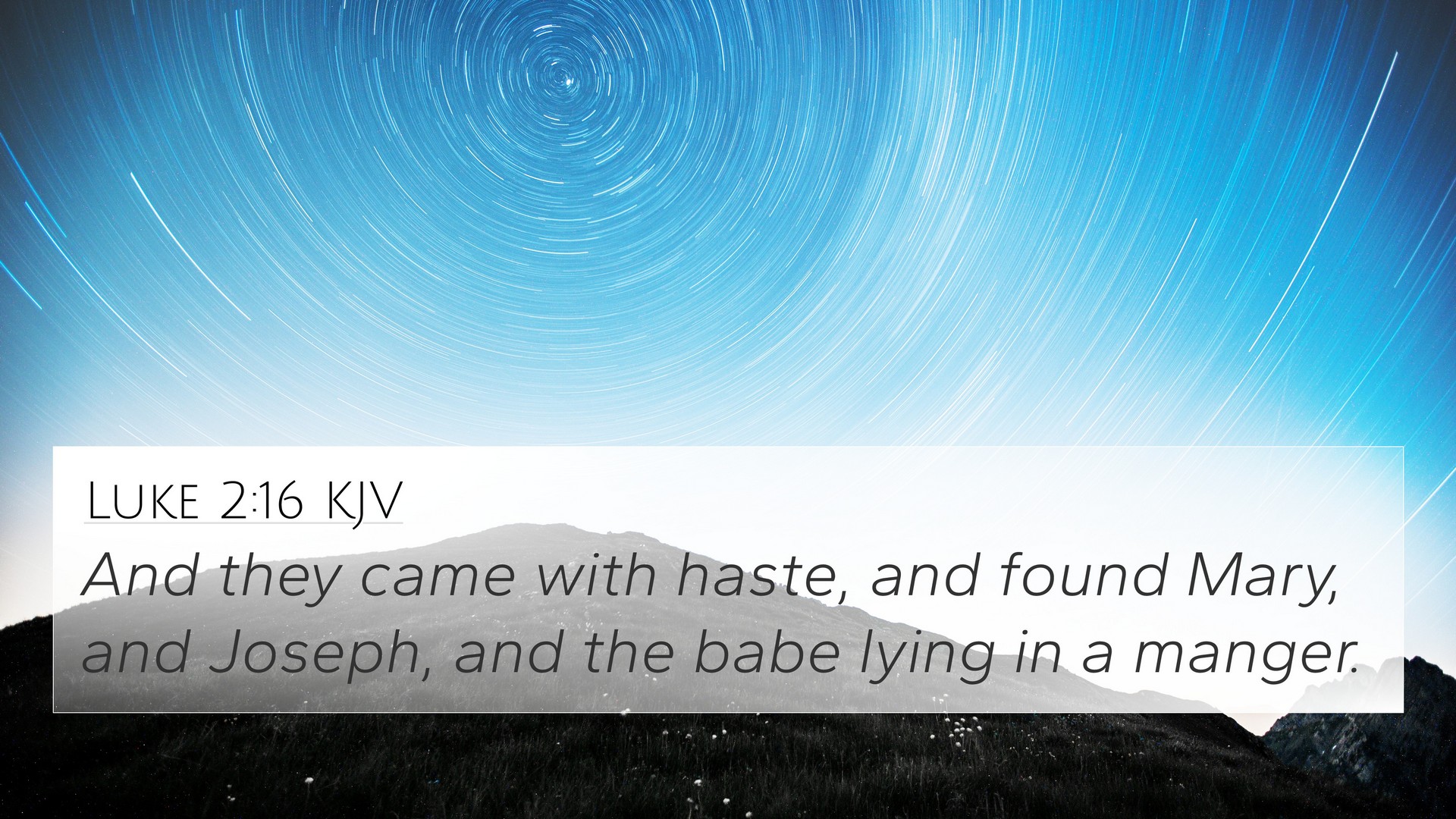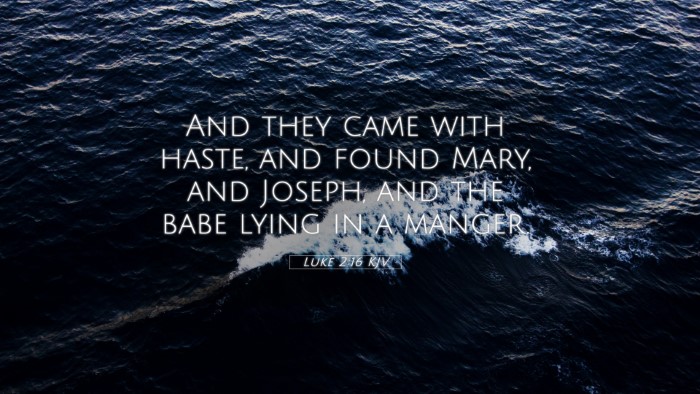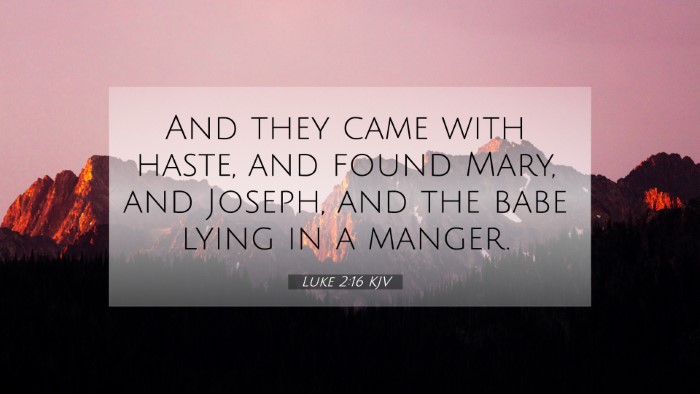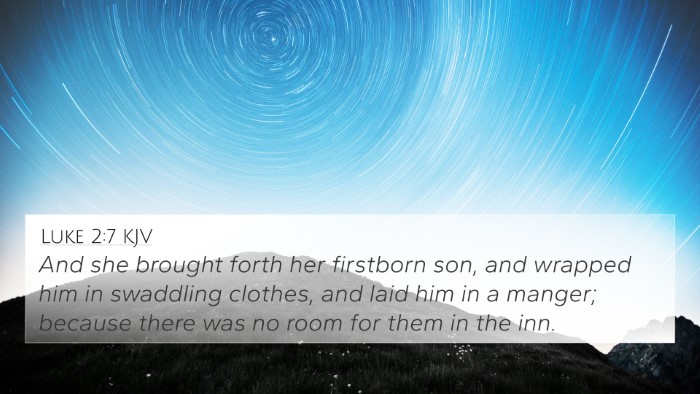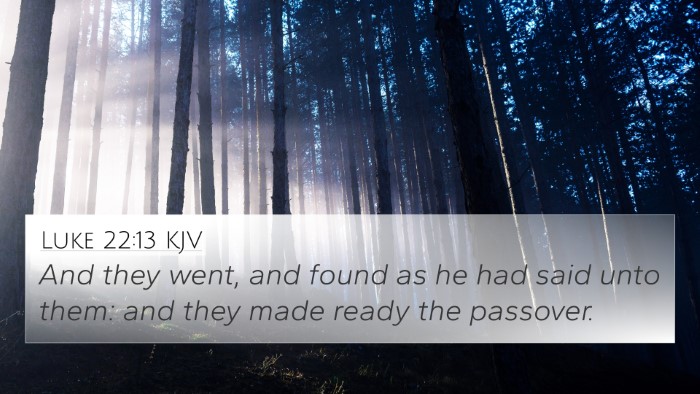Understanding Luke 2:16
Luke 2:16 states: "So they hurried off and found Mary and Joseph, and the baby, who was lying in the manger." This verse captures a pivotal moment in the Nativity story where the shepherds respond to the angelic announcement of Christ's birth. It signifies the joy and urgency with which the shepherds sought to witness the miraculous event.
Contextual Overview
This passage is situated within the broader narrative of Jesus' birth (Luke 2:1-20), which describes the circumstances surrounding the Savior's entrance into the world. The shepherds play a significant role, illustrating the theme of humility and God's grace in revealing His Son to the lowly and marginalized.
Commentary Insights
- Matthew Henry emphasizes the shepherds' haste and faith, noting that their swift journey reflects the anticipation of good news. Their willingness to leave their flocks illustrates the profound pull of the divine event.
- Albert Barnes highlights the fulfillment of the angel's message. He argues that the shepherds found the child precisely as described—lying in a manger—which affirms the authenticity and truthfulness of the angelic proclamation.
- Adam Clarke points out the significance of the location of Christ's birth in a stable, symbolizing His humble beginnings and divine mission to reach all humanity, including the outcast and disenfranchised.
Thematic Connections
This verse illustrates several key themes in Scripture:
- Divine Revelation: The shepherds were among the first to receive the announcement of Jesus' birth, underscoring that God often chooses unlikely recipients to communicate His message.
- Joy and Peace: The shepherds' discovery of the Christ child brings joy, reflecting the broader themes of hope and peace that accompany the coming of the Messiah.
- Fulfillment of Prophecy: The setting of Jesus' birth fulfills prophecies from the Old Testament, demonstrating the continuity of God's plan throughout the Scriptures.
Bible Cross-References
Luke 2:16 has several significant cross-references that enhance our understanding:
- Isaiah 9:6 - Prophecy of the child to be born, emphasizing His divine nature.
- Micah 5:2 - Predicts the birthplace of the Messiah in Bethlehem.
- Matthew 1:23 - The announcement of Emmanuel, correlating to His birth and significance.
- Luke 1:30-33 - The angel's announcement to Mary about Jesus' upcoming birth.
- John 1:14 - The Word becoming flesh ties to the incarnation theme evident in Luke’s account.
- Galatians 4:4 - Speaks of God sending His Son in the fullness of time, connecting to the birth narrative.
- Hebrews 2:14 - Highlights Christ's humanity and His coming into the world.
Importance of Cross-Referencing
Cross-referencing biblical texts provides deeper insights into scripture and helps establish thematic connections that enrich our understanding. The process of comparative biblical verse analysis plays a crucial role in grasping the full narrative and doctrinal significance of passages like Luke 2:16.
Conclusion
In summary, Luke 2:16 serves as a powerful reminder of the humble circumstances of Christ's birth and the joyful response of those who first recognized Him as the Savior. Through the lens of public domain commentaries, we can appreciate the layered meanings present in this verse and its connections to other essential scriptures.
Further Study Tools
For those looking to enhance their understanding of Bible verses through cross-referencing, consider utilizing:
- Bible concordances for easy navigation through related verses.
- Bible cross-reference guides which provide thematic connections.
- Online tools for Bible cross-referencing that streamline the study process.
- Comprehensive Bible cross-reference materials to dive deeper into the interconnections of Scripture.
